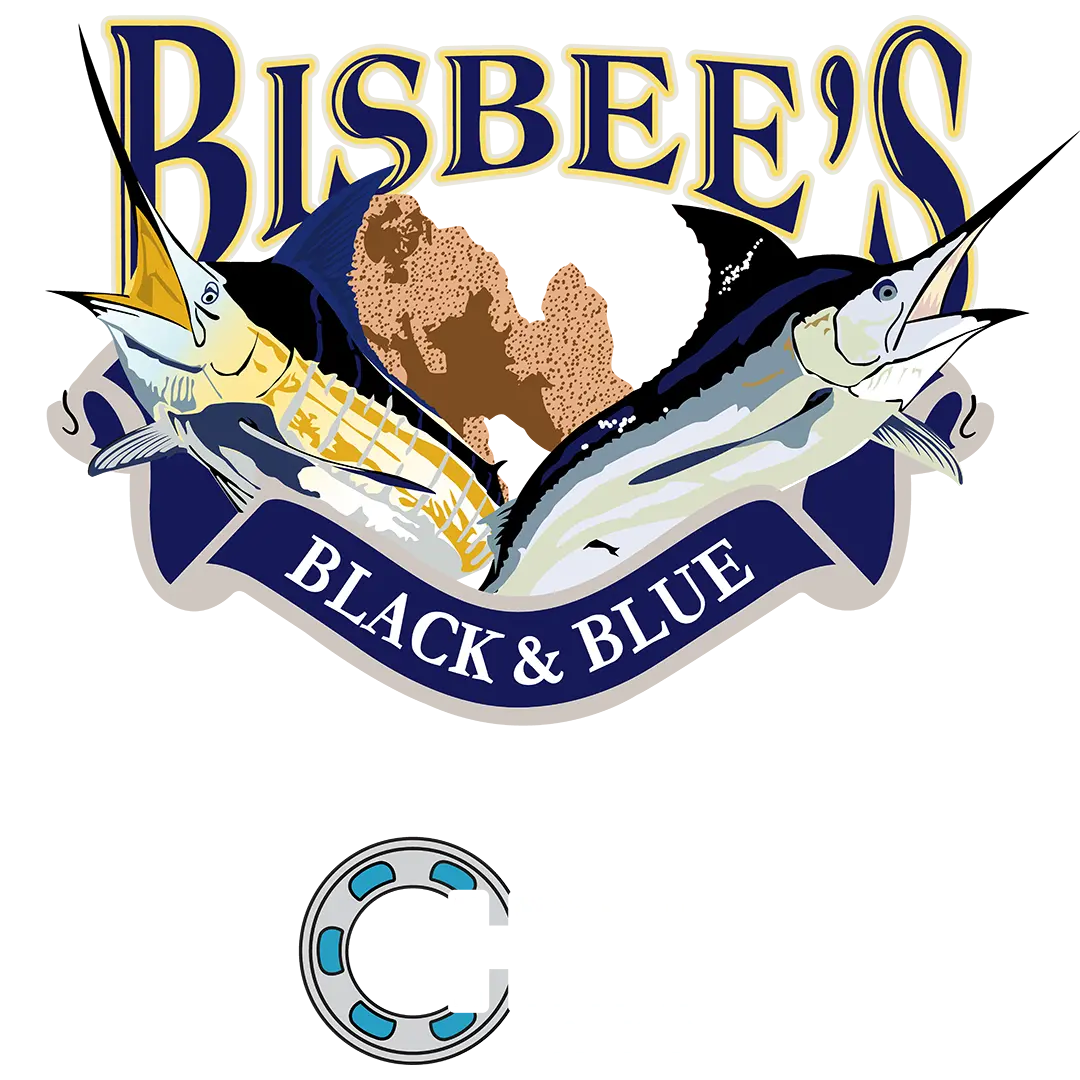Angling Rules
Official angling regulations for all Bisbee's tournaments. These rules govern the process of hooking and fighting a fish. Please review them carefully to ensure compliance.
Angling Rules
Angling Regulations
The Bisbee’s tournaments are “Team” tournaments.
- The tournament does not regulate who may be involved in the management of, or the manipulation of, the equipment and/or tackle leading up to, during, or following the playing of a fish. This means that more than one angler may fight a single fish.
- Once a fish is hooked, the rod/reel involved in playing the fish must stay in physical contact with the angler(s). It may not be set into any type of rod holder that assists the angler(s).
- When a fish is hooked or entangled on more than one line, the team must cut away the extra line(s) as quickly as possible.
- From the time that a fish strikes, anyone onboard may remove other lines, teasers and devices from the water.
- Once the leader is brought within grasp of the crew, or the end of the leader is wound to the rod tip, more than one person is permitted to touch the leader-this DOES NOT apply to the double line.
- One or more gaffers may be used in addition to persons holding the leader. The gaff handle must be in hand when the fish is gaffed.
The Following Acts Will Disqualify a Catch
- Failure to comply with the Tournament's general, equipment or angling rules and regulations.
- Resting the rod in a rod holder, on the gunwale of the boat, or any other object while playing the fish.
- Handlining or using a handline or rope attached in any manner to the angler's line or leader for the purpose of holding or lifting fish.
- Shooting, harpooning, or lancing any fish at any stage of the catch.
- Chumming with or using as bait the flesh, blood, skin, or any part of mammals other than hair or pork rind used in lures designed for trolling or casting.
- Using a boat or device to beach or drive a fish into shallow water in order to deprive the fish of its normal ability to swim.
- Changing the rod or reel while the fish is being played.
- Splicing, removing, or adding to the line while the fish is being played.
- Using a size or kind of bait that is illegal to possess.
- Attaching the angler's line or leader to part of a boat or other object for the purpose of holding or lifting fish.
- If a fish escapes before gaffing and is recaptured by any method other than as outlined in the angling rules.
- When a rod breaks (while the fish is being played) in a manner that reduces the length of the tip below minimum dimensions.
- Mutilation to the fish, prior to boating the catch, caused by sharks, other fish, mammals, or propellers that remove or penetrate the flesh. Injuries caused by leader or line, scratches, old healed scars or regeneration deformities are not considered disqualifying injuries.
Reglas de Pesca
Regulaciones de Pesca
- El Torneo no regula cuantos pescadores estarán involucrados en la pelea y/o manejo de la caña encaminado a, durante y después de la pelea, de un ejemplar.
- Una vez que es anzueleado un pez, la caña y carrete involucrados deben estar en posesión física del pescador, no podrá ser colocado en ningún tipo de portacañas, que ayuden al pescador.
- Cuando el pez ha sido enganchado por varios anzuelos o esta enredado en las líneas, el equipo cortara las líneas extra tan pronto como sea posible.
- Al momento que un pez "Pica" cualquier persona a bordo podrá retirar las otras líneas/curricanes del agua.
- Una vez que el leader está al alcance del marinero O que el destorcedor toca la punta de la caña, más de una persona podrá tocar el leader, NO aplica a la doble línea.
- Una o más personas podrán usar ganchos, además de quienes estén sujetando el Leader, el mango del gancho SIEMPRE debe estar en manos de una persona.
Los Siguientes Actos Descalificaran una Captura
- No cumplir con las reglas generales del torneo y las regulaciones de equipo.
- Dejar la caña en algún portacañas U objeto fijo del barco mientras se pelea un ejemplar.
- Usar una línea de mano, o atar una línea extra para jalar y/o subir el ejemplar a bordo.
- Disparar, arponear O lancetear el pescado, en cualquier etapa de la pelea.
- Cebar, utilizando como carnada la carne, sangre o piel de mamíferos, únicamente es aceptado usar piel y pelos de cerdo en carnada artificial para castear O trolear.
- Usar un bote u otro artefacto para llevar al pez a aguas poco profundas, para privarlo de su capacidad de nado.
- Cambiar caña y carrete mientras un pez está siendo peleado.
- Agregar o remover línea a la caña, mientras se pelea un pez.
- Utilizar carnada de tamaño y posesión ilegal.
- Atar o sujetar a cualquier parte del bote la línea o leader con el objeto de retener o levantar el ejemplar.
- Si un pez escapa antes de ser enganchado y se recaptura por otro método que no sea como indican las reglas de pesca.
- Al romperse una caña (mientras se pelea un pez) y sus dimensiones queden reducidas a menos de la estipulación legal.
- Mutilación al pez antes de considerarlo atrapado, causado por tiburones, otros peces, mamíferos o propelas y que remueva o penetre la carne. Heridas causadas por la línea o leader, así como cicatrices o deformidades regenerativas no se consideran motivo para descalificar.
